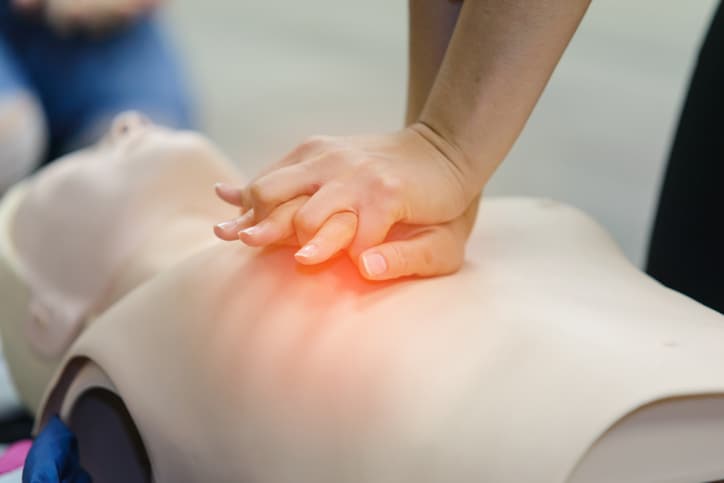View or Download AHA Statement (PDF)
The American Heart Association (AHA) has issued interim guidance for CPR and emergency cardiovascular care for patients with known or suspected coronavirus (COVID-19) infection to help reduce the risk for transmission of SARS-CoV-2, the virus that causes COVID-19.
“Health care providers need to focus on helping people during this challenging time and the American Heart Association is doing everything it can to make it easier,” Comilla Sasson, MD, PhD, vice president for emergency cardiovascular care science and innovation at the AHA, said in a statement.
“The information we are providing is drawn primarily from the US Centers for Disease Control and World Health Organization recommendations. It includes information about caring for patients and guidance for EMS and other first responders,” said Sasson, an emergency medicine physician at University of Colorado Hospital, Denver.
- Aerosol-generating procedures such as CPR and endotracheal intubation expose providers to a greater risk of disease transmission and should be performed in airborne infection isolation rooms (AIIRs); personnel should use respiratory protection.
- Only providers essential for patient care and procedural support should be present during the procedure and the room should be cleaned and disinfected following the procedure.
- Patients with known or suspected COVID-19 should be cared for in a single-person room with the door closed and AIIRs should be reserved for patients undergoing aerosol-generating procedures.
- N95 respirators or respirators that offer a higher level of protection should be used instead of a face mask during aerosol-generating procedures.
- Providers should put on a respirator or facemask (if a respirator is not available) before entering a patient’s room or care area. Facilities should return to use of respirators for patients with known or suspected COVID-19 once the supply chain is restored.
- Wear eye protection, gloves, and gowns.
- When gowns are in short supply, they should be prioritized for aerosol-generating procedures, care activities where splashes and sprays are anticipated, and high-contact patient care activities that provide opportunities for transfer of pathogens to the hands and clothing of providers.
- If intubation is needed, consider using rapid sequence intubation with appropriate personal protective equipment (PPE).
- If possible, avoid procedures which generate aerosols, such as bag-valve mask, nebulizers and non-invasive positive pressure ventilation.
- Consider proceeding directly to endotracheal intubation in patients with acute respiratory failure. Avoid the use of high-flow nasal oxygenation and mask CPAP or bilevel CPAP due to greater risk of aerosol generation.
- Emergency medical dispatchers should ask callers about the possibility of COVID-19 in the patient. The query process should not supersede the provision of prearrival instructions to the caller when immediate lifesaving interventions are needed.
- Prehospital care providers and healthcare facilities should be notified when COVID-19 is suspected in a patient requiring emergency transport.
- EMS clinician practices should be based on the most up-to-date COVID-19 clinical recommendations and information from appropriate public health authorities and EMS medical direction.
View or Download AHA Statement (PDF)


